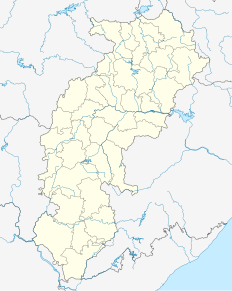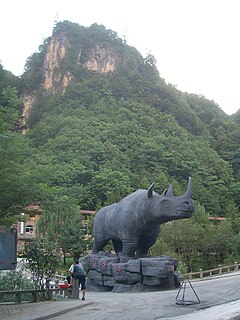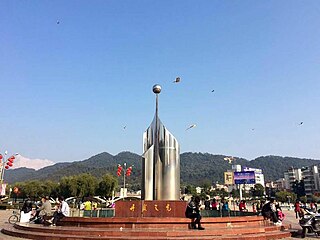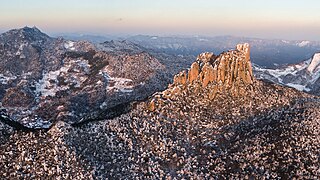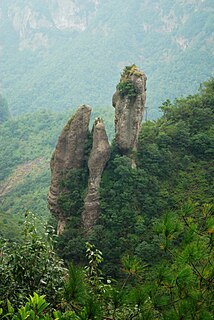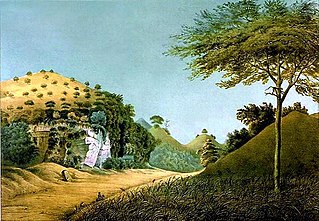This article needs additional citations for verification .(December 2011) (Learn how and when to remove this template message) |
Ziyuan National Geopark [1] Chinese :资源国家地质公园 is a park in Ziyuan County, Guangxi, China.

Chinese is a group of related, but in many cases not mutually intelligible, language varieties, forming the Sinitic branch of the Sino-Tibetan language family. Chinese is spoken by the Han majority and many minority ethnic groups in China. About 1.2 billion people speak some form of Chinese as their first language.

Ziyuan County is a county in the northeast of Guangxi, China, bordering Hunan province to the north. It is under the administration of the prefecture-level city of Guilin.
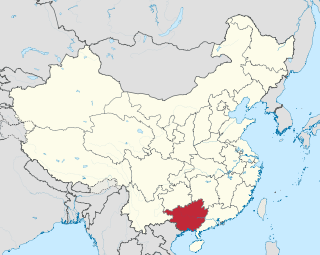
Guangxi ( ; formerly romanised as Kwangsi; Chinese: 广西; Zhuang: Gvangjsih, officially the Guangxi Zhuang Autonomous Region, is an autonomous region of the People's Republic of China, located in south China and bordering Vietnam. Formerly a province, Guangxi became an autonomous region in 1958.
The park's entrance is at the Tianmenshan Scenic Spot which is situated at the middle part of the Geopark, the end of Zijiang driftage route, covering an area of about 5 km in diameter. Steep mountains, magic rocks, caves and streams characterize the park, where there are 38 major rock formations: 19 caves, 2 ponds, 6 springs 8 stone sculptures and so on. The Danxia topography is mainly characterized by dense deep gorges and valleys, and with many ridges and canyons. There are water eroding patterns with snake-like stone girders, as well as grand colluvial caves. The main peak, "Sanniang (the third girl) Stone" is a column that is said to hold up the sky[ citation needed ]. Here in the Ziyuan National Geopark is "The greatest Chinese medicine valley"[ citation needed ] which absorbs almost all the kinds of Chinese herbs used in Chinese medicine. The 16.3 m high sculpture of the Chinese medicine ancestor named "Shennong" honors this valley. There is 50 km2 of virgin forest on top of Shenxianzhai at 630m elevation, which can rarely be found in China. From east to west, where the sky is presenting the line you can see the Heavens Ridge, Peachblossom Island, Shenxianzhai, Sanniang Stone etc. The presentation of Danxia topography includes the fresco showing "the General Riding on a horse to Heavens Gate". The Wangyou Spring is known for to make you forget all the unhappy times in your life.[ citation needed ]

A geopark is a unified area that advances the protection and use of geological heritage in a sustainable way, and promotes the economic well-being of the people who live there. There are global geoparks and national geoparks.
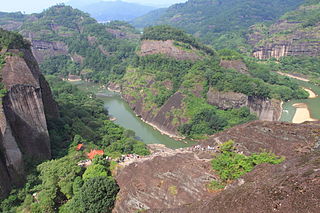
The Danxia landform refers to various landscapes found in southeast, southwest and northwest China that "consist of a red bed characterized by steep cliffs". It is a unique type of petrographic geomorphology found in China. Danxia landform is formed from red-coloured sandstones and conglomerates of largely Cretaceous age. The landforms look very much like karst topography that forms in areas underlain by limestones, but since the rocks that form danxia are sandstones and conglomerates, they have been called "pseudo-karst" landforms. They were formed by endogenous forces and exogenous forces.

Colluvium is a general name for loose, unconsolidated sediments that have been deposited at the base of hillslopes by either rainwash, sheetwash, slow continuous downslope creep, or a variable combination of these processes. Colluvium is typically composed of a heterogeneous range of rock types and sediments ranging from silt to rock fragments of various sizes. This term is also used to specifically refer to sediment deposited at the base of a hillslope by unconcentrated surface runoff or sheet erosion.




